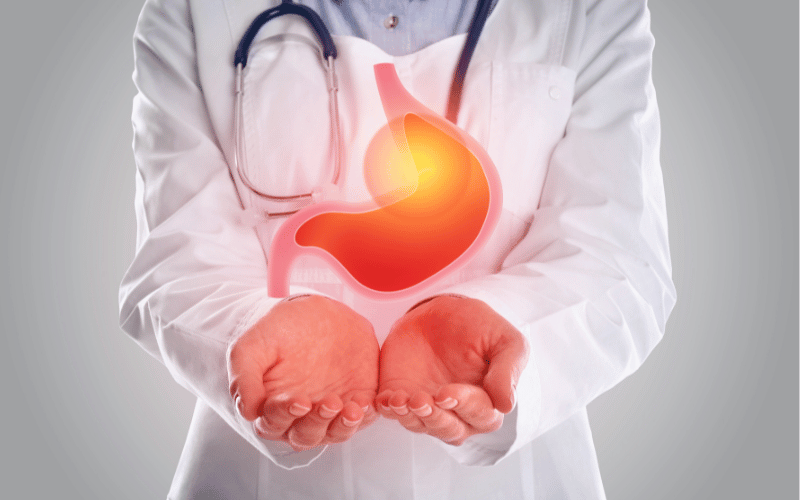Symptom 9: Gastrointestinal Issues

While EDS is often visualized in terms of joint and skin symptoms, the internal systems aren’t spared. The gastrointestinal tract, responsible for digesting food and absorbing nutrients, frequently malfunctions in EDS patients, leading to a gamut of uncomfortable and sometimes debilitating symptoms.
Collagen, the protein that’s problematic in EDS, isn’t just found in skin and joints; it’s in the gut too. This defective collagen can compromise the strength and flexibility of the gastrointestinal tract, leading to slowed or erratic movements. The result? Symptoms like constipation, diarrhea, bloating, and gastroesophageal reflux disease (GERD).
Some with EDS also face dysphagia, a fancy term for swallowing difficulties. This might sound trivial, but imagine choking or coughing each time you sip water or bite into your sandwich. It’s not just about discomfort; it poses risks like aspiration, where food enters the lungs.
There’s growing evidence to suggest that the gut isn’t just a food processing unit. It’s closely connected to the brain, influencing mood and even cognitive functions. So, gastrointestinal disturbances in EDS aren’t just about physical discomfort; they can cast shadows on mental well-being, leading to conditions like anxiety or depression.
Managing gastrointestinal issues in EDS often requires a multi-faceted approach. Dietary modifications, like low-FODMAP diets or gluten-free diets, can offer relief for some. Medications targeting specific symptoms, like antacids for GERD or laxatives for constipation, can be beneficial. Regular consultations with gastroenterologists ensure timely interventions, preventing complications. (9)